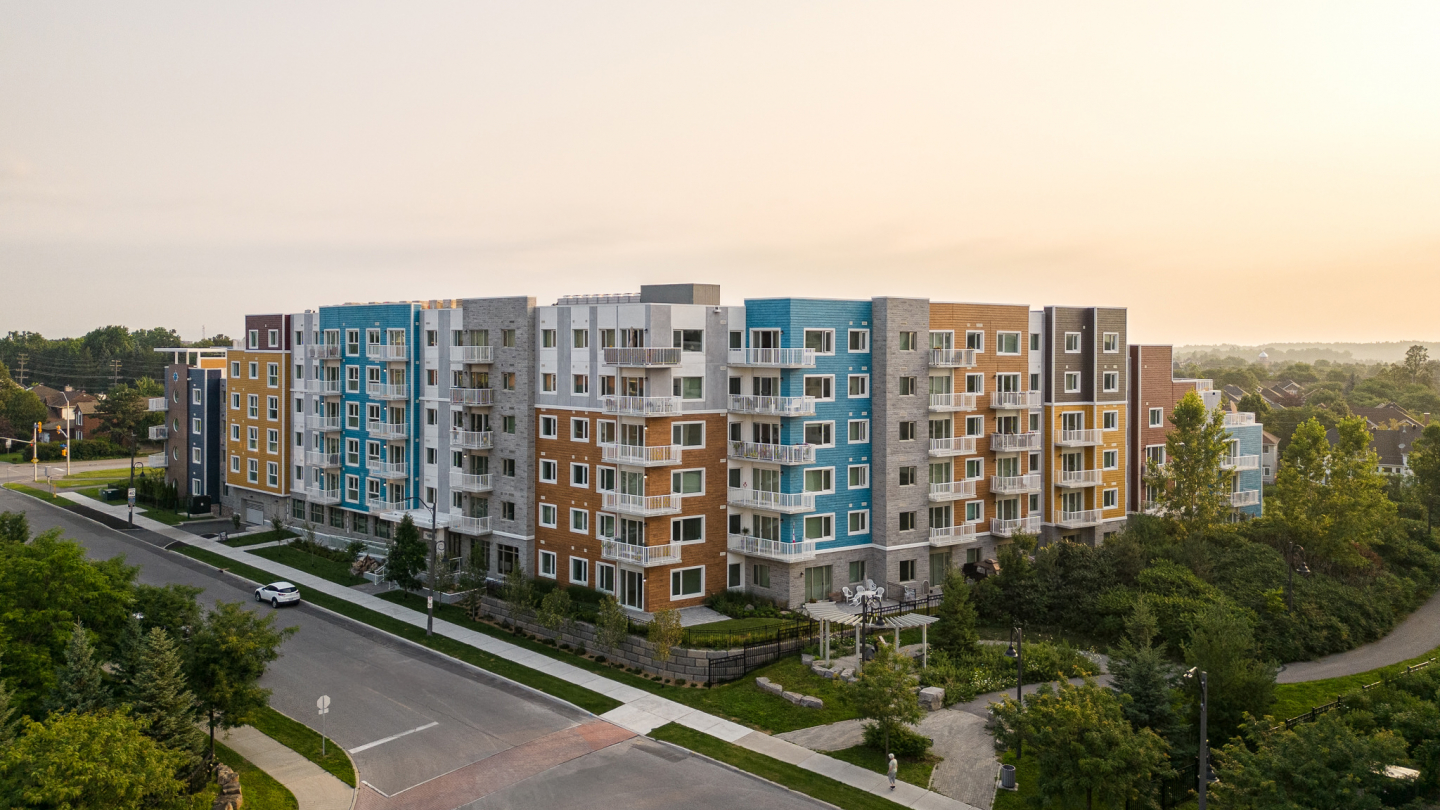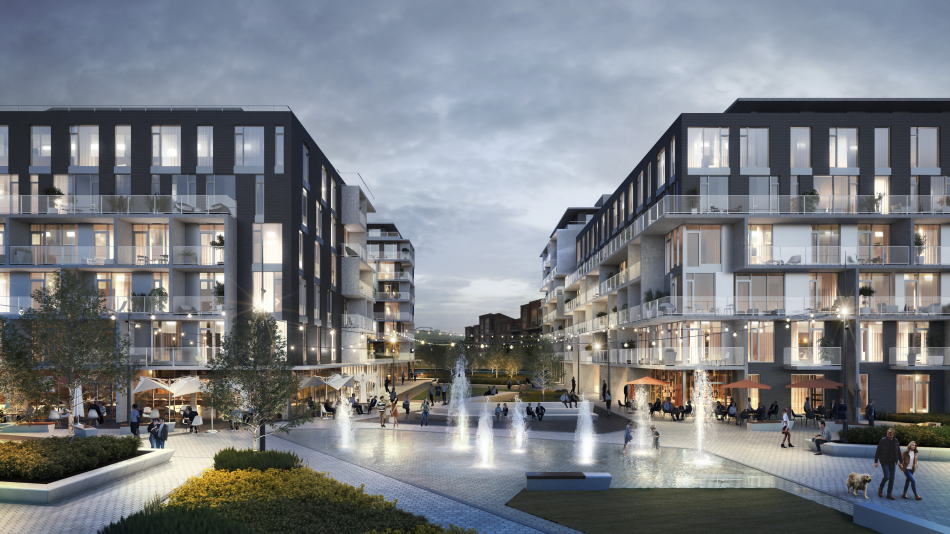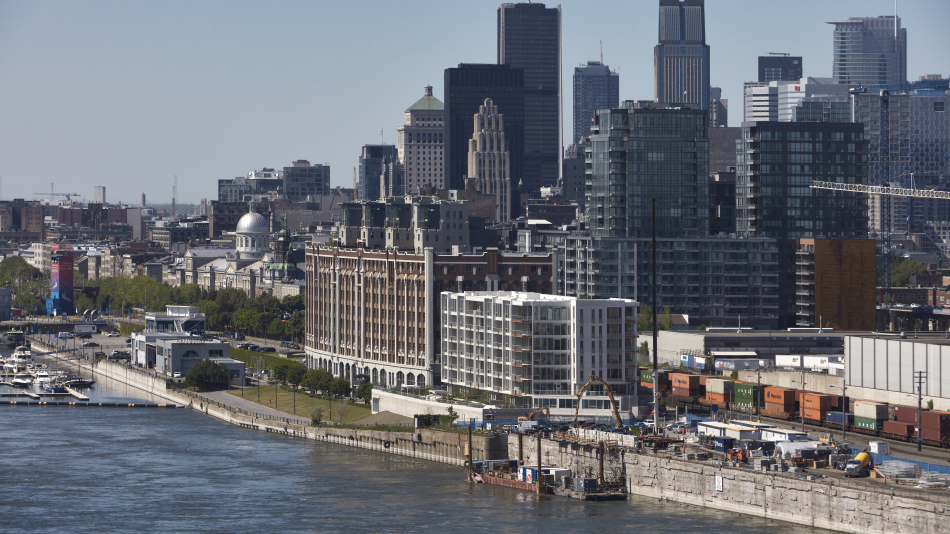The distribution of the 156 units in a succession of colorful volumes and the development of terraces at the ends reflect the spirit of the wooden facades of the east coast, despite the large scale of the construction (80 linear meters and up to 6 floors). The presence of single-family houses and power lines led to the site layout and massing of the construction.


The natural topography is exploited through the creation of water collection basins and the integration of rock massifs into the landscaping. The U-shaped massing gives structure to an interior courtyard which guides the viewpoints from the units toward the green space. The courtyard features walking paths which link with the neighbouring park and public trails. A slight slope raises the first units from the ground to ensure privacy.
The concrete modules were factory-molded to match the texture of wood (floors) and stone (base). Multiple coats of paint helped reproduce the shades and veining of the natural materials. The choice of concrete, in addition to the speed and efficiency it allowed for closing the building envelope, offers optimum energy performance when combined with controlled fenestration. The installation of 158 solar roof panels supplies nearly 25% of the building's annual energy requirements.
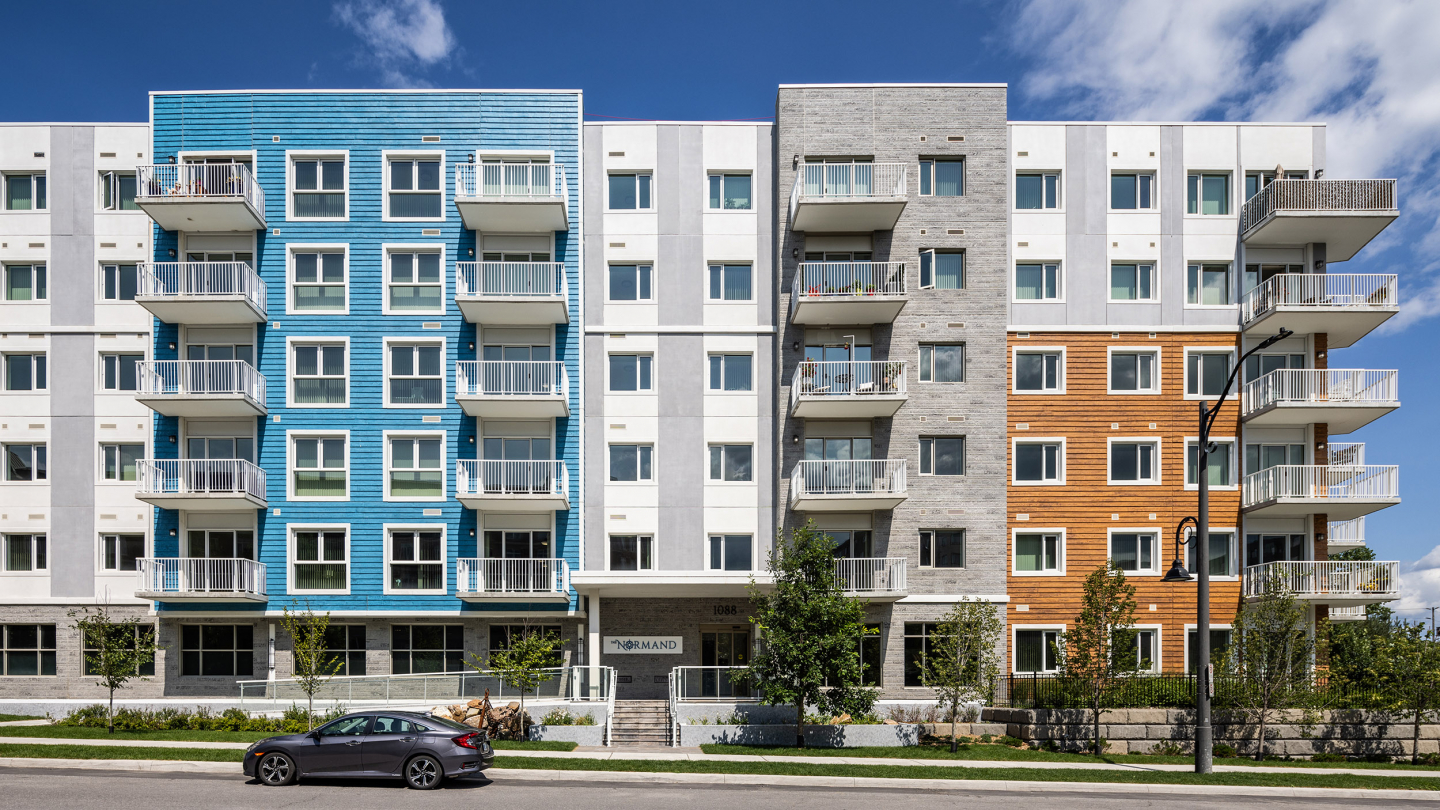
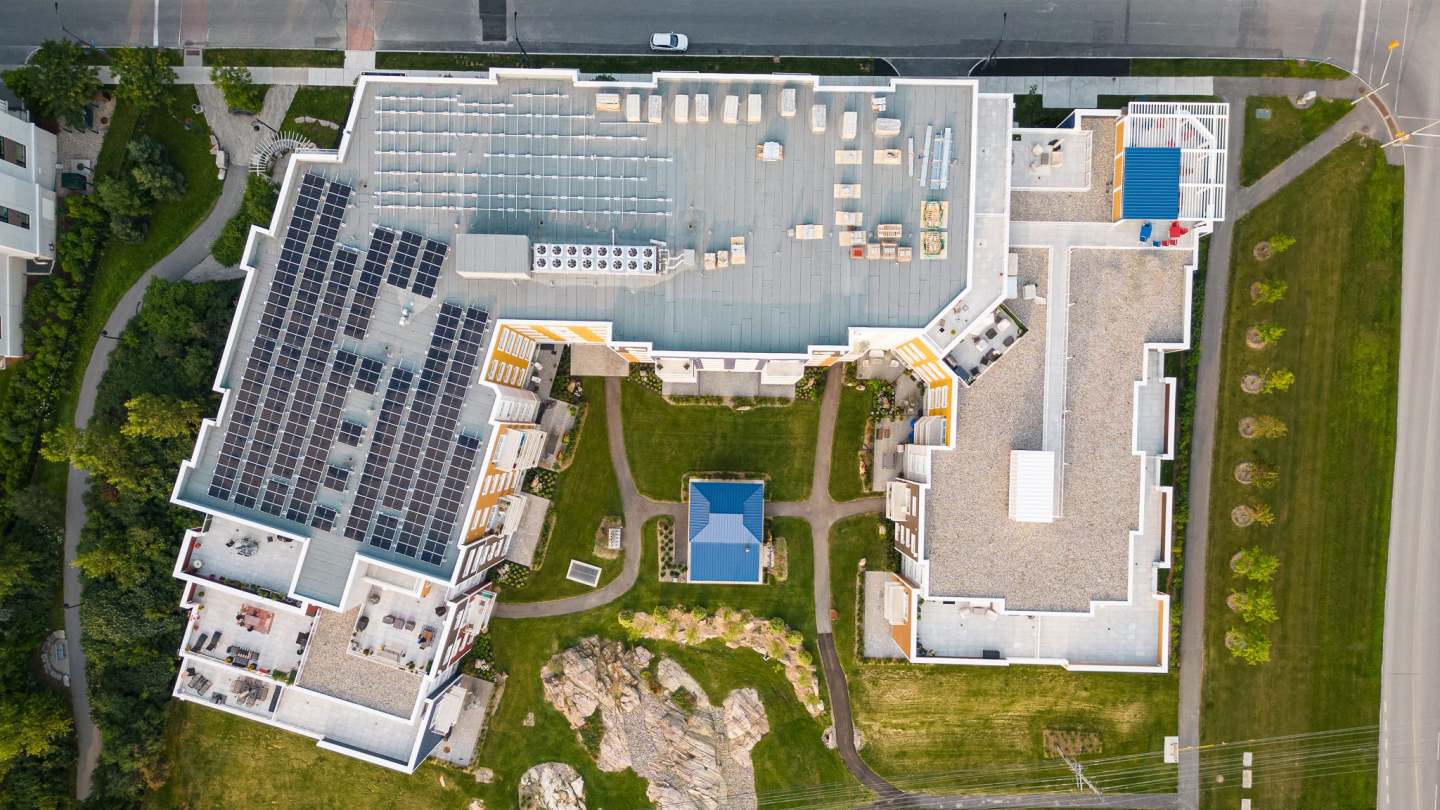
Photo credit: Alex St-Jean + Justin Van Leeuwen
